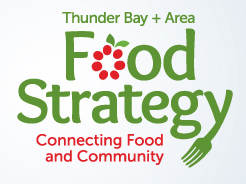THUNDER BAY — A new report from the Thunder Bay and Area Food Strategy identifies shortcomings in programming and policies which restrict student access to a healthy food environment.
"The school food environment is a place where children's education about food, our food systems and healthy living occurs," the executive summary states, but according to TBAFS, the study found "inequities across our publicly funded schools in how food-related programs are implemented and resourced."
The report was led by two Lakehead University researchers using information they gathered from 50 city schools.
Out of 38 elementary schools, they found that 34 offer students breakfast or a grab-and-go snack program, and nine have a program that provides emergency food access.
Six out of eight local high schools offer breakfast or snacks, and one operates a free lunch program.
The availability of programs which promote food literacy, such as school gardens, varies at the elementary level.
However, all high schools work with Roots to Harvest supporting teachers and providing school garden programs and food literacy programming in food classes.
Roots to Harvest also operates a Get Fresh Cafe in all public high schools, and all secondary schools offer food classes.
According to the report, elementary schools are affected more than high schools by barriers that were documented in the study:
- in most schools, students don't have enough time to eat their lunch
- there are no regular hot lunch programs
- most rely on volunteers or parents to assist with food programming such as breakfast programs and lunchroom supervision
- students eat in their classrooms or in the gym
- there are no cafeterias to support food preparation or food literacy
- there is an overreliance on fundraising to support food programs
- breakfast programs "reinforce a charity model," which removes pressure from government to adequately resource school food programs
At the high school level, the authors observed that many students leave school to buy food from convenience stores or fast-food restaurants.
Their executive summary concludes funding and programs promoting access to healthy food are "piecemeal" and that there are no policies within school boards to oversee food programming.
The study found that schools "wanted direction and support in the form of universal food programming, board policies and food philosophies."
Recommendations coming out of the report include::
- advocate and support schools to prioritize the school food environment
- support and expand food programs that are equitable and provide access to healthy, nutritious food
- develop curriculum and professional development tools that promote a healthy school food environment
TBAFS is an organization that takes a coordinated approach to achieving food security in the community. Its more than 40 participants include farmers, institutions, government, food security organizations and others.
It has joined the National Coalition for Healthy School Food which is pushing for a national universal school food program.
